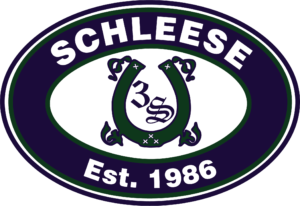Saddle Fit and Rock ‘n’ Roll! (Literally)
One of the very misunderstood things we often run into is the ‘opinion’ of the peanut gallery watching their fellow riders that saddles aren’t fitting because they may seem to be too curved in the back (i.e., not lying flat on the horse’s back). There is actually method to our madness in making saddles this way and making them fit this way. Let me try to explain…
A saddle’s supporting surface on top of the horse’s ribcage is generally almost always flat from front to back. The majority of all saddle trees made have a slight arc so that the shoulder (which moves 6-8” upwards and backwards) has room to engage. The back, which we like to see with a “swinging” motion, should be able to come up without too much interference from the rear of the tree. The panel stuffing is mainly at the pommel and at the cantle, in an effort to provide extra cushioning at these areas.
Every effort should have been made during saddle construction to increase the weight-bearing surface from front to back in order to stabilize the saddle. Some saddle companies even go to the extreme of straightening the tree even further in an attempt to prevent “rocking”. However, recent research using thermography, computerized saddle pads, fibre-optic photography, and other state-of-the-art technology has indicated that in contrast to this belief, a saddle sitting “perfectly flat” can actually inhibit the horse’s movement and cause heat, friction, etc. – resulting in a sore back. The challenge to your saddle fitter is to fit the saddle so it does indeed have a slight ability to rock without becoming a teeter totter.
The “sweet spot” of the saddle can be either in the front, the centre, or the rear. This is achieved by shaping the top of the tree in accordance to the style of the saddle or the conformation of the rider. The bottom of the tree and the panel is designed to fit the individual horse’s back. No matter what saddle you ride, every effort should be made to distribute your weight over the horse’s back in three sections in a ratio of 30:40:30. While of paramount importance to most riders is the comfort of their horse, not enough attention is paid to the comfort of the rider – it is in fact much more crucial to ensure the saddle fits the rider and is comfortable, or it’s pretty much a given that your horse will never be comfortable, no matter how good the saddle fits him. You as the rider will constantly be fighting the saddle, which will translate down to the horse and impede his comfort and ability to move.
Never compromise the fit to the horse (using pads or whatever) in order to create a more comfortable fit to the rider. There are 15 points on a saddle which are geared towards fitting the rider – none of which have anything to do with fitting the horse – and seat balance is only one of them!
While the tendency towards a forward seat balance is presently very popular, this is in exact opposition to the tendency back in 1986, when we first arrived from Germany, when the popular saddles were mostly rear balance. Today, with increasing technology allowing better insight into the horse’s back and musculature, every effort is being made to reduce or eliminate the weight off the horse’s back – especially past the 18th thoracic rib which is where the saddle support area ends. This however backfires when the rider sits in the wrong seat balance (or one or the other of the 15 points of ‘human saddle fit’ are off) for her. The rider will subconsciously protect herself and push her back into the saddle, thereby increasing the pressure by twice as much to the horse’s back. The rider becomes stiff, uncomfortable and rigid, and will impede the horse accordingly. A saddle I recommend for the individual rider is one which fits the rider at all points. It can then be easily adjusted to fit the second individual in the equation – the horse, so that all three components – horse, rider, and saddle melt into one unit. Saddle fit is actually three components – fitting the rider, fitting the horse, and then the third component will result, which is harmony. Harmony cannot be achieved if only one component works.
I’d like to conclude this in repeating a statement I have often heard judges use – the horse can only be as good as the rider. The saddle is an important tool in achieving the maximum performance of both. Power is transferred from the hindquarters through the saddle to the front, and the rider’s suppleness matches that of the horse if everything is in harmony.
Some of the outside points of influence in determining saddle fit:
Rider |
Saddle |
Horse |
| Ability improves | Flocking shifts | Training / Conditioning |
| Changing disciplines | Leather condition | Age |
| New trainer with different expectations |
Tree twisting (due to uneven musculature of horse and/or rider |
Nutritional changes |
| New horse | Billets stretching | Health swings |
| Weight loss/gain | Seat foam settles | Reshoeing |
